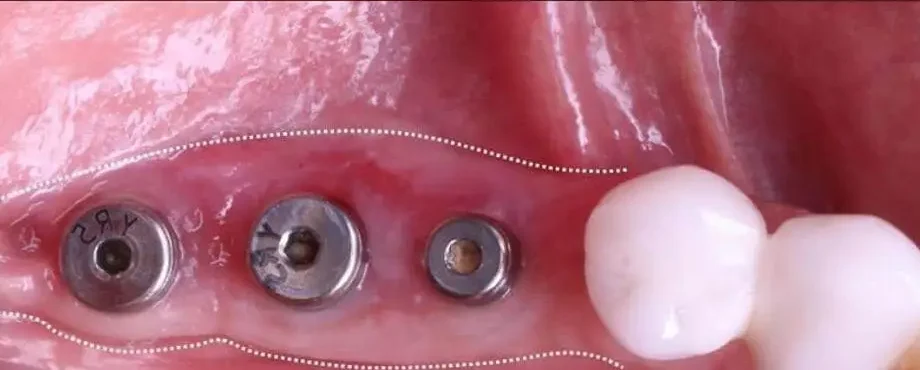Soft tissue augmentation, also known as soft tissue grafting or soft tissue augmentation procedures, is a surgical technique used to enhance the volume, thickness, and contour of the peri-implant soft tissues. This procedure is often employed when there is inadequate soft tissue support around dental implants, leading to esthetic concerns or functional issues. Soft tissue augmentation aims to create a more natural-looking soft tissue profile and soft tissue management around the implant restoration, improving both the appearance and the long-term stability of the implant.
Soft Tissue Augmentation Techniques
There are several techniques used for soft tissue augmentation around dental implants, each with its own indications, advantages, and limitations. Some of the most common soft tissue augmentation procedures include:
- Connective Tissue Grafts
- Free Gingival Grafts
- Pedicle Grafts
- Allografts and Xenografts
- Guided Bone Regeneration (GBR) with Soft Tissue Grafting
Connective Tissue Grafts
Connective tissue grafts involve harvesting a small piece of tissue from the palate or another donor site and transplanting it to the recipient site around the dental implant. The harvested tissue is typically taken from the subepithelial layer of the palate, where it contains a rich blood supply and a dense network of collagen fibers. Once transplanted to the recipient site, the connective tissue graft is secured in place and sutured to the surrounding tissues. This technique can be used to increase the volume and thickness of the peri-implant mucosa, improving soft tissue contours and esthetics.
Free Gingival Grafts
Free gingival grafts are similar to connective tissue grafts but involve harvesting a thin layer of tissue from the surface of the palate, including the epithelium and the underlying connective tissue. The graft is then transplanted to the recipient site and secured in place with sutures. Free gingival grafts are often used to increase the width of the peri-implant mucosa and create a more stable soft tissue seal around the implant.
Pedicle Grafts
Pedicle grafts involve transferring a flap of tissue from an adjacent area to the recipient site without completely detaching it from the donor site. The flap is rotated or advanced to cover the exposed implant surface and improve soft tissue contours. Pedicle grafts are particularly useful in cases where there is adequate soft tissue support adjacent to the implant site, allowing for the preservation of blood supply and tissue viability.
Allografts and Xenografts
Allografts and xenografts involve the use of donor tissue from human or animal sources to augment the peri-implant soft tissues. These graft materials are often processed to remove cellular components and minimize the risk of immune rejection. Allografts and xenografts can be used as an alternative to autogenous grafts in cases where there is insufficient donor tissue available or when patients prefer to avoid additional surgical sites.
Guided Bone Regeneration (GBR) with Soft Tissue Grafting
In cases where there is both soft tissue and bone deficiency around the implant, a combination of guided bone regeneration (GBR) and soft tissue grafting may be indicated. GBR involves using barrier membranes and bone graft materials to regenerate bone in areas of bone loss around the implant. Soft tissue grafting is then performed to augment the peri-implant soft tissues and improve esthetics.
Conclusion
Soft tissue augmentation procedures are typically performed in conjunction with implant placement or during the prosthetic phase of treatment. The success of soft tissue augmentation depends on several factors, including the quality of the donor tissue, the surgical technique used, and the patient’s ability to follow postoperative care instructions. With proper planning and execution, soft tissue augmentation can significantly enhance the esthetic outcomes and long-term stability of dental implant restorations, improving patient satisfaction and quality of life.





